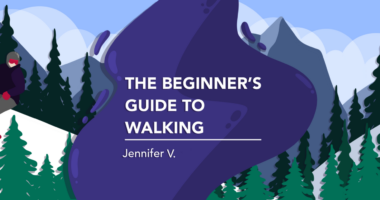This NMO Awareness Month, I’m owning my place in my community
As we honor our common cause, we celebrate treatments and other advances

We all want to belong, but having a rare disease can sometimes feel lonely. Thankfully, the neuromyelitis optica (NMO) community has come a long way since I was diagnosed over 13 years ago.
I’ve come a long way, too. Acknowledging that March is NMO Awareness Month is a recent endeavor for me, and I’m grateful to participate. For me, the awareness month represents community, collaboration, and the advancement of science to allow us all to confront this disease.
Whether you wear a pink shirt this month as part of the Sumaira Foundation community or a green shirt to represent the Guthy-Jackson Charitable Foundation, the point is that we finally belong. There’s no greater feeling than knowing we’re not alone in this fight.
The community NMO built
Long ago, it was believed that NMO was linked to multiple sclerosis (MS) because of the many similarities in symptoms. Before we had aquaporin-4 (AQP4) testing for diagnosis, as many as 43% of NMO patients were misdiagnosed as having MS.
Today, patients are diagnosed with NMO more regularly, which tells us that the medical community is more aware of this disorder. More AQP4 tests, also known as NMO-IgG tests, are being administered. This is a simple blood test that looks for NMO-specific serum markers, helping identify more patients around the world than had once been anticipated.
I continue to be in awe of the work done by the people at the Sumaira Foundation. They’ve worked tirelessly to identify NMO ambassadors, people in several countries who spearhead community outreach in their local language. Existing patient outreach programs are duplicated in other countries, providing a collaborative approach to patient and caregiver support.
No topic is off limits among us when it comes to healthcare — including insurance, treatments, relapses, and even intimacy. This transparency is rare, but it’s found in our small but mighty community.
Advances in treatments
It’s logical to assume that big pharmaceutical companies will want to focus their attention only on medical treatments that appeal to a large number of patients. Fortunately, that hasn’t been the case for NMO, which has a smaller patient base than many other diseases.
Several companies have focused some of their research and development attention on NMO, developing three medications that can minimize and, in the best-case scenario, prevent future attacks that can debilitate patients. These NMO treatments include Enspryng (satralizumab-mwge), Soliris (eculizumab), and Uplizna (inebilizumab-cdon).
Furthermore, many pharmaceutical companies have cut out the middleman. Instead of asking our doctors what their patients think, these progressive organizations are choosing to speak to us directly. Several of them, including Alexion and Roche, have invite-only patient councils that meet and discuss everything from our top concerns to feedback on their communication and the best ways to share treatment details.
These councils are led by one of their employees, usually with a job title like “Patient Experience” or “Patient Outreach” — roles that once didn’t exist to support the NMO community.
Life expectancy
I remember how scared I was when I was diagnosed with NMO. The modern world has taught us to research on the internet, which at the time had some terrifying life expectancy statistics. When I surpassed the life expectancy I found in my ill-advised research, I was relieved. If I can beat one milestone, I can beat the next one, too.
With the advancement in treatment options, I feel confident that the average life expectancy has vastly improved. Other patients share the sentiment that we’re focused on living now rather than dying.
Next steps
One of the greatest problems NMO patients face is daily pain management. It’s a tough symptom to tackle because it’s different for everyone, and pain is subjective. All patients are forced to develop coping mechanisms and have a high pain tolerance, but this is no way to live.
Researchers and specialists continue to incorporate pain management into our treatment plans. At present, it might include opioid alternatives, cannabis, meditation, breathing exercises, or drugs that are used to treat other ailments but have pain management properties.
I’ve met more NMO patients in person in the past couple of years than I did in the previous decade. This community isn’t quiet anymore. We’re rising out of the rare disease community and demanding that our governments, healthcare providers, and clinicians see us and treat us with the understanding that NMO is its own disease with its own anomalies.
If you’re an NMO patient or caregiver, how have you seen things change over the past few years? Please share your thoughts in the comments below.
Note: Neuromyelitis News is strictly a news and information website about the disease. It does not provide medical advice, diagnosis, or treatment. This content is not intended to be a substitute for professional medical advice, diagnosis, or treatment. Always seek the advice of your physician or other qualified health providers with any questions you may have regarding a medical condition. Never disregard professional medical advice or delay in seeking it because of something you have read on this website. The opinions expressed in this column are not those of Neuromyelitis News or its parent company, Bionews, and are intended to spark discussion about issues pertaining to neuromyelitis optica spectrum disorder (NMOSD).







Francisca Brown
I have a granddaughter is 18 years old just found out not too long ago is she has been diagnosed with nmo and she's in treat heaven treatment well she's in the hospital right now but she is already lost her eyesight and now she's having plasma treatment but I'm trying to find out because we live in Pensacola Florida is there any place here like our foundation that way she can get help and more information on how to deal with this